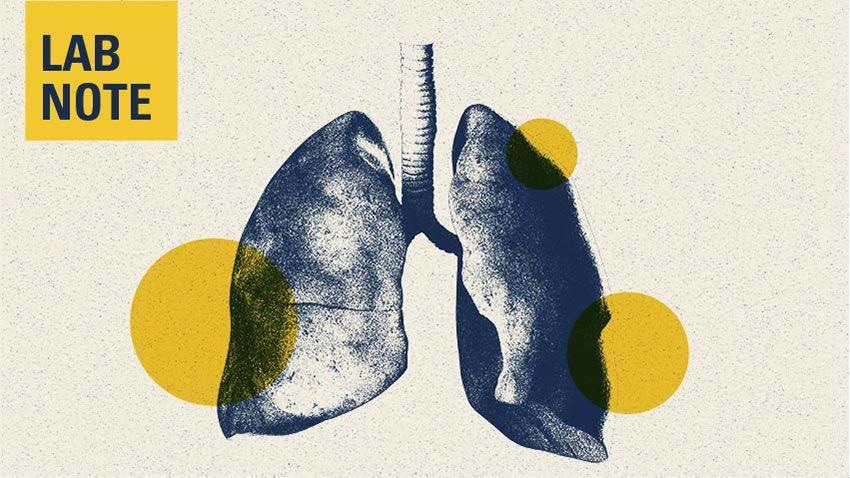A biodegradable nanoparticle used in medical sutures has been identified to tackle a rare, often deadly inflammatory disease, according to researchers.
 Graphic of lungs. Image Credit: Michigan Medicine.
Graphic of lungs. Image Credit: Michigan Medicine.
Researchers discovered that a certain macrophage, an immune cell that eliminates bacteria or dead cells, plays a critical role in scleroderma or systemic sclerosis, patients’ persistent inflammation, and scarring in the lungs and skin. This macrophage, known as MARCO+, was shown to be higher in persons with the orphan disease, which affects roughly 70,000 Americans and has no effective therapy at the moment.
The researchers injected biodegradable PLG nanoparticles (poly (lactic-co-glycolic) acid) into mice. PLG selectively targeted MARCO+ inflammatory cells and prevented skin and lung fibrosis, according to the findings, which were published in JCI Insight. According to John Varga, M.D., senior author of the paper and chief of the Michigan Medicine Division of Rheumatology, nanoparticle therapy might even repair fibrosis in these mice.
The findings reveal a stark difference: untreated mice had terrible scarring in the lungs, and those treated with this nanoparticle saw the disease decease in severity or completely disappear. This is a promising step towards targeted treatment for patients with early scleroderma that could potentially mitigate the worst effects of the disease.
John Varga, Study Senior Author and Chief, Division of Rheumatology, Michigan Medicine
The researchers believe that in people with scleroderma, MARCO+ cells get activated and circulate in the bloodstream, where they go to the tissues and cause scar formation. Varga notes that while the PLG nanoparticle decreased fibrosis in mice models, further research is needed to figure out how it suppresses MARCO+ activation.
The US Food and Drug Administration has approved PLG to make biodegradable sutures. Varga’s co-authors previously discovered that PLG reduced inflammation in mice models of myocardial infarction. However, the treatment is not currently available for patients.
We hope that this type of therapy will one day be evaluated in clinical trials for scleroderma. People with scleroderma are at great risk for skin and lung thickening that impacts function, and we look for any way to stop that from happening.
John Varga, Study Senior Author and Chief, Division of Rheumatology, Michigan Medicine
Journal Reference:
Xu, D., et al. (2022) PLG nanoparticles target fibroblasts and MARCO+ monocytes to reverse multi-organ fibrosis. JCI Insight. doi.org/10.1172/jci.insight.151037.